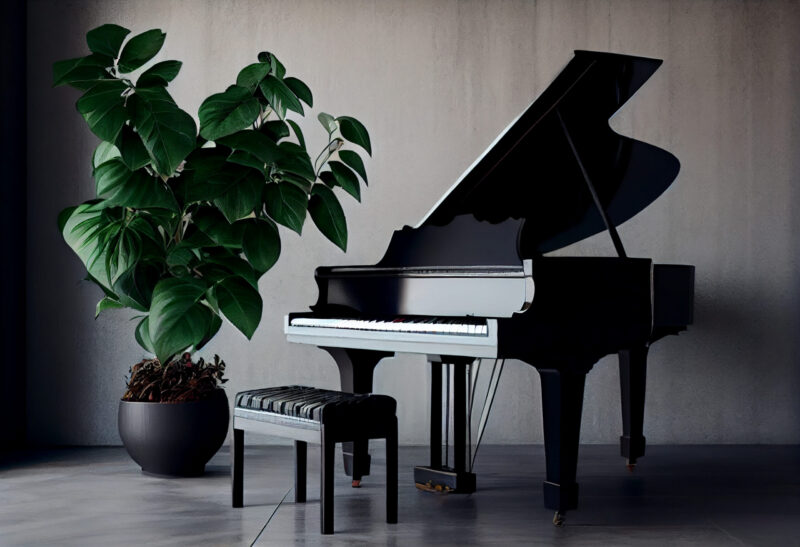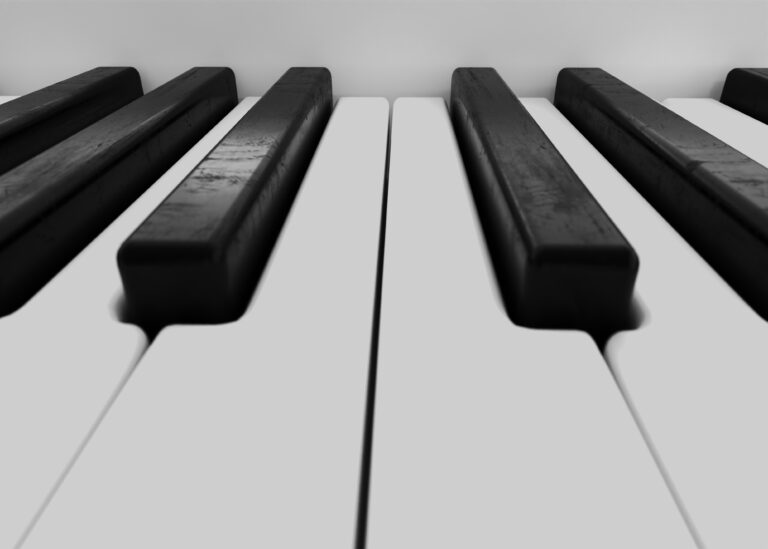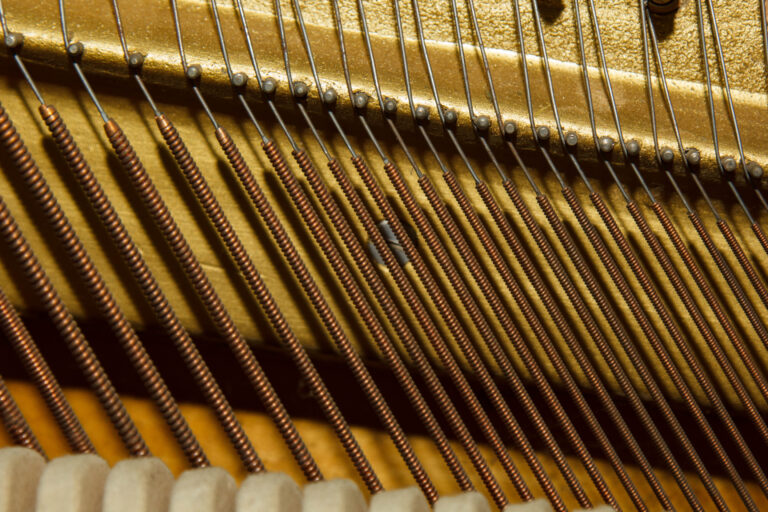How Deep is a Piano: A Quick Guide to Piano Dimensions
If you’re wondering how deep a piano is, you’re not alone. Many people are curious about the size and dimensions of this beautiful instrument. The depth of a piano can vary depending on the type and model, but generally, it falls within a specific range.
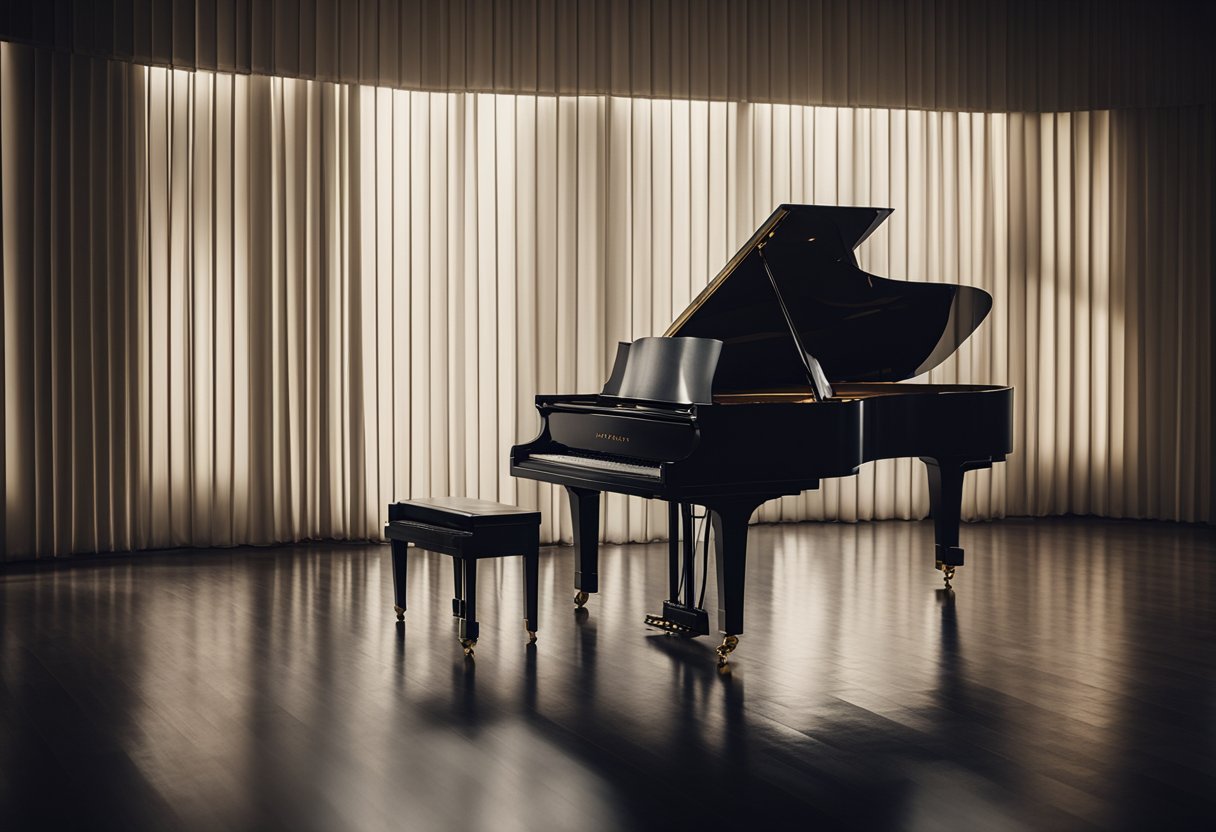
The depth of an upright piano typically ranges from 23 to 28 inches. This measurement is taken from the front of the keyboard to the back of the piano. Grand pianos, on the other hand, can range from 4.5 to 10 feet in length, with depths ranging from 4 to 6 feet. The size of a piano can have an impact on its sound quality, with larger pianos often producing a richer, fuller sound.
Piano Dimensions Overview
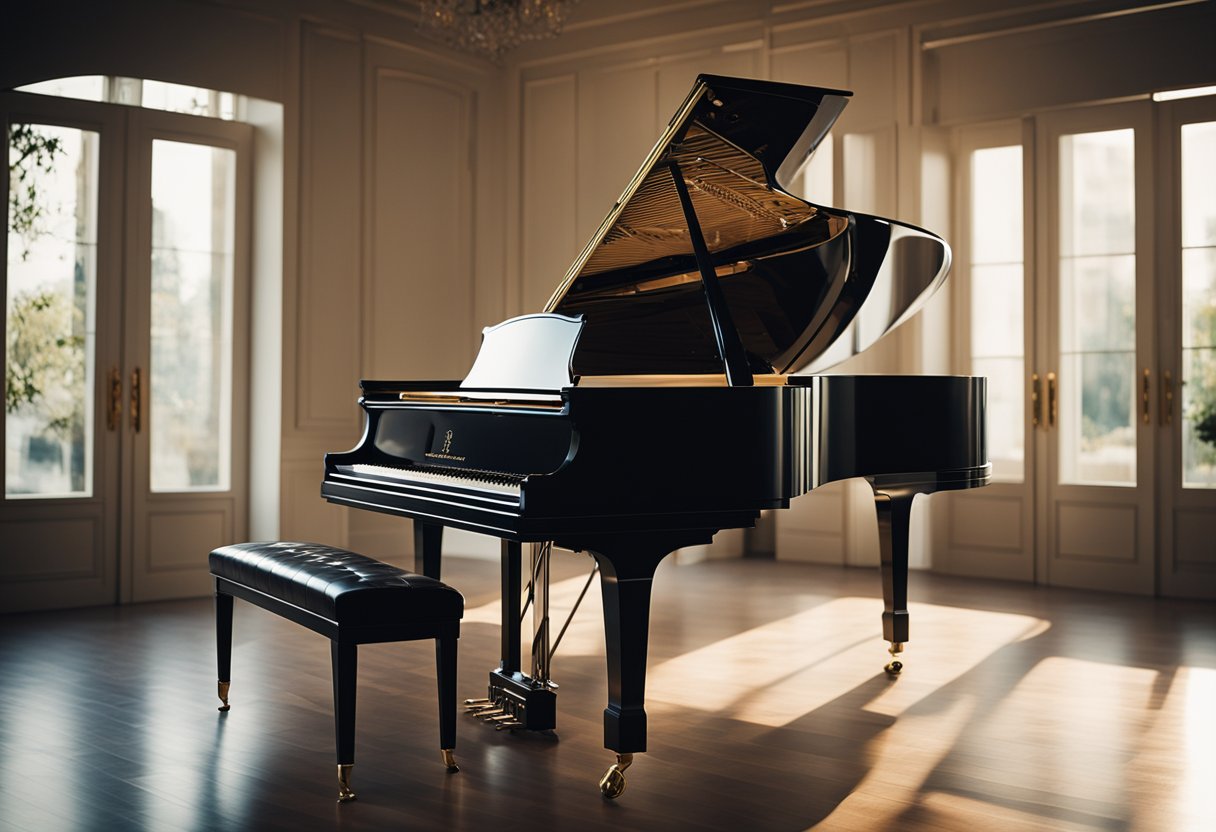
When it comes to buying or moving a piano, it’s important to know its dimensions. The most common types of pianos are upright and grand pianos, and their sizes can vary greatly.
Upright Pianos
Upright pianos are typically between 110-135 cm (43-53 inches) in height, 150-160 cm (59-63 inches) in width, and 55-65 cm (22-26 inches) in depth. These dimensions can vary slightly depending on the model and manufacturer.
Grand Pianos
Grand pianos come in a range of sizes, from the smallest “baby” grand pianos to the largest concert grand pianos. Baby grand pianos are usually around 160-178 cm (5’3″-5’10”) in length, while concert grand pianos can be up to 300 cm (9’10”) in length.
The depth of a grand piano is typically around 150 cm (59 inches), while the height can range from 100-130 cm (39-51 inches). The width of a grand piano can range from 140-190 cm (55-75 inches).
It’s important to note that the weight of pianos can also vary greatly, with grand pianos weighing anywhere from 300-1,000 kg (660-2,200 lbs) depending on the size and materials used.
Standard Upright Piano Depth
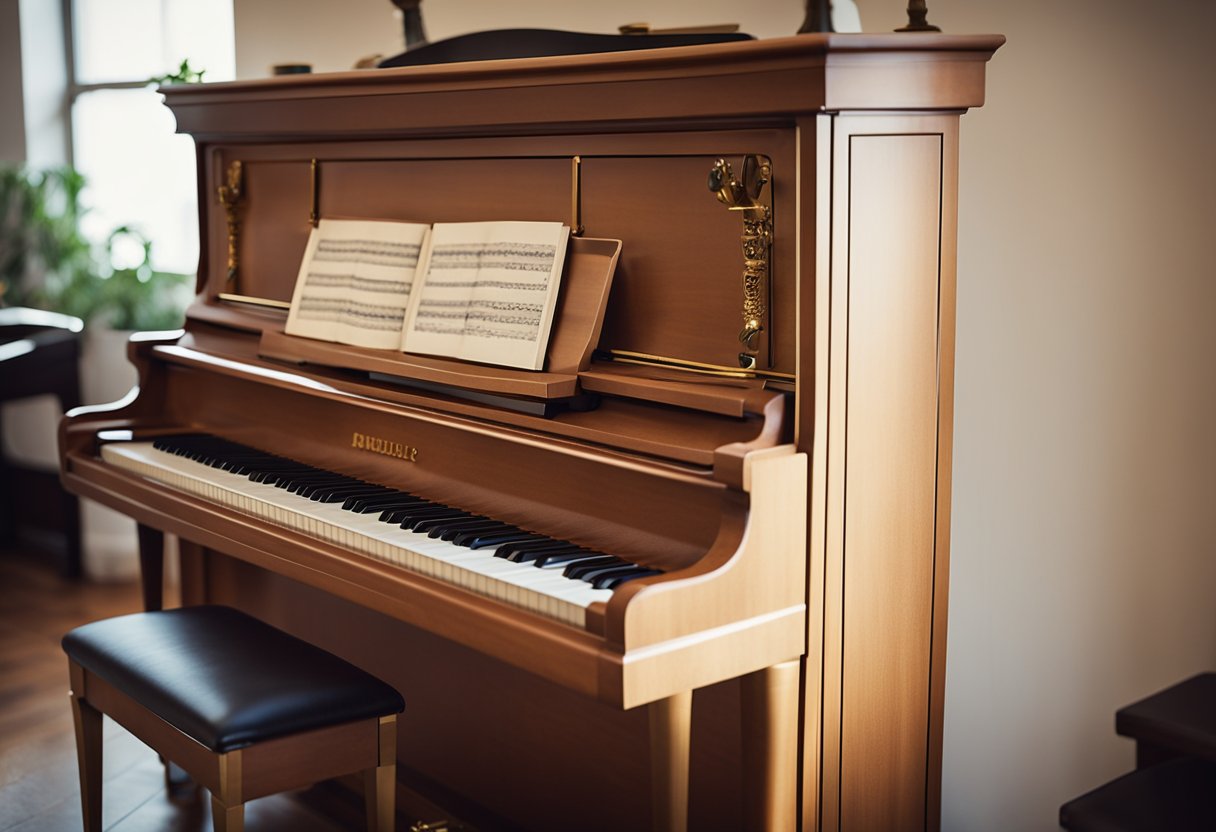
If you are wondering about the depth of a standard upright piano, you have come to the right place. The depth of a piano is an important factor to consider when buying, moving, or storing one. In this section, we will explore the standard depth of an upright piano and the factors that affect it.
Cabinet Depth
The cabinet of an upright piano is the outer shell that encloses the internal mechanism and strings. The depth of the cabinet varies depending on the make and model of the piano. However, the standard depth of an upright piano cabinet is around 60 cm (24 inches). This depth allows for the soundboard and strings to resonate properly and produce a rich and full sound.
Internal Mechanism Space
The internal mechanism of an upright piano includes the soundboard, strings, hammers, and other components that produce sound. The depth of the internal mechanism space is also an important factor to consider when choosing a piano. The standard depth of the internal mechanism space of an upright piano is around 30 cm (12 inches). This space allows for the hammers to strike the strings and produce sound, while also providing enough clearance for the other components to function properly.
Grand Piano Depth Variations
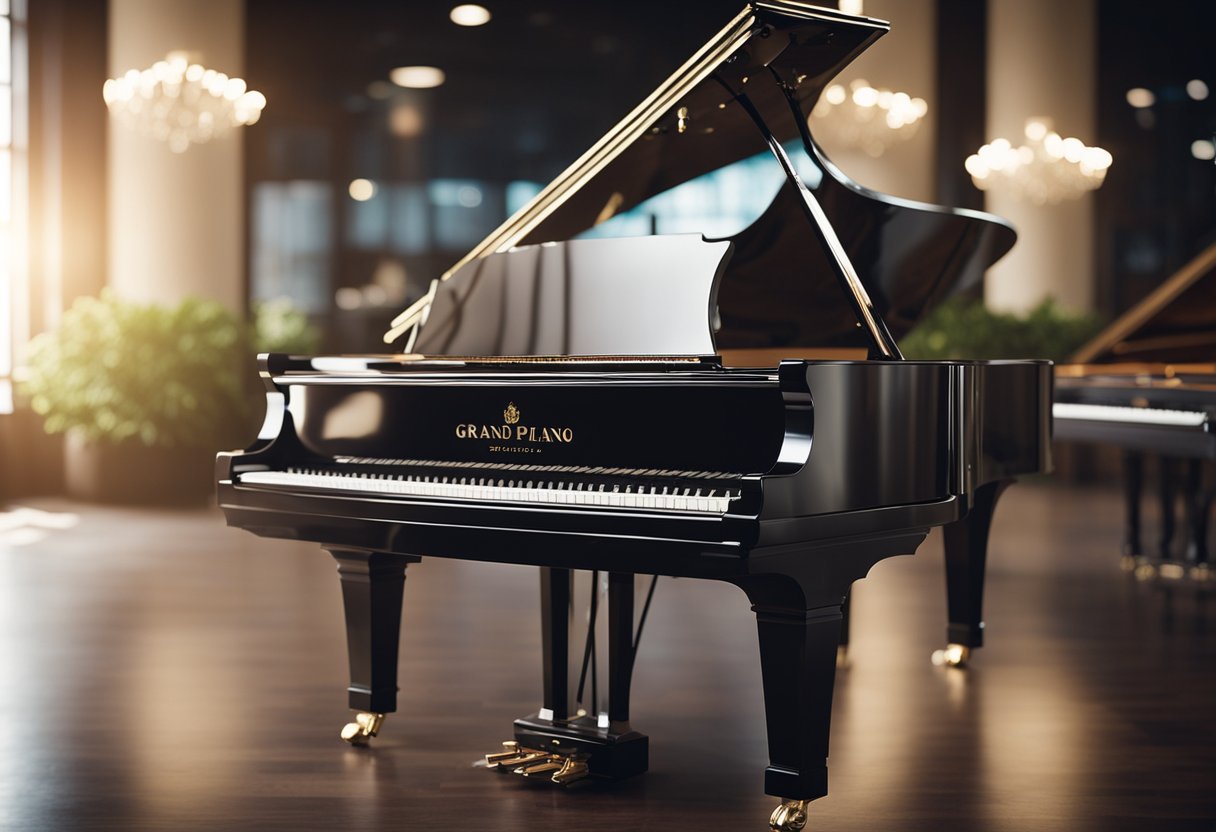
When it comes to grand pianos, the depth can vary depending on the size and type of piano you choose. The depth of a grand piano is measured from the front of the keys to the back of the piano.
Concert Grand Pianos
Concert grand pianos are the largest type of grand piano and are often used in concert halls and large performance spaces. These pianos typically have a depth of around 6 feet or 183 cm, but can range from 5’8″ to 9’6″. The longer length of the concert grand piano allows for a longer soundboard and larger strings, which produces a richer, fuller sound.
Baby Grand Pianos
Baby grand pianos are the smallest type of grand piano and are often used in homes and smaller performance spaces. These pianos typically have a depth of around 5 feet or 152 cm, but can range from 4’6″ to 5’7″. The shorter length of the baby grand piano means that the soundboard and strings are also smaller, resulting in a lighter, brighter sound.
Digital Piano Depth Considerations
When it comes to digital pianos, depth is an important factor to consider. The depth of a digital piano can affect its sound quality, playability, and overall performance. Here are some considerations to keep in mind when choosing a digital piano based on its depth:
1. Standard Depth Measurements
The standard depth measurement for a digital piano is around 14-15 inches. This depth is suitable for most players and provides a comfortable playing experience. However, if you have limited space in your home or studio, you may want to consider a digital piano with a smaller depth measurement.
2. Slimline Depth Measurements
If you are looking for a digital piano that is more compact and takes up less space, you may want to consider a slimline model. These digital pianos have a depth measurement of around 10-12 inches, making them ideal for small apartments or studios. However, keep in mind that the sound quality may not be as rich as a standard depth digital piano.
3. Grand Piano Depth Measurements
If you are looking for a digital piano that closely resembles the depth of a grand piano, you may want to consider a digital piano with a depth measurement of around 18-20 inches. These digital pianos provide a more authentic playing experience and are ideal for advanced players or those who are used to playing on a grand piano.
Factors Influencing Piano Depth
When it comes to the depth of a piano, several factors come into play. The depth of a piano is determined by the size of its soundboard and the length of its strings. Let’s take a closer look at these factors.
Soundboard Size
The soundboard is an essential part of the piano that amplifies the sound produced by the strings. The larger the soundboard, the deeper the piano will be. A larger soundboard allows for greater resonance and a fuller sound, which is why grand pianos tend to be deeper than upright pianos.
String Length
The length of the strings also plays a significant role in determining the depth of a piano. Longer strings produce lower notes, which means that a piano with longer strings will be deeper than one with shorter strings. Grand pianos typically have longer strings than upright pianos, which is why they tend to be deeper.
Frequently Asked Questions
What are the standard dimensions of an upright piano?
The standard height of an upright piano is around 48 inches, and the width is usually around 58 inches. However, the depth of an upright piano can vary depending on the model and manufacturer.
What is the typical depth of a grand piano?
The depth of a grand piano can vary depending on the size of the instrument. A small baby grand piano can have a depth of around 4 feet, while a concert grand piano can have a depth of up to 9 feet.
How much space is required to accommodate a piano?
When accommodating a piano, it is important to consider the instrument’s dimensions and the space required for the player. A standard upright piano can fit comfortably in a room with a minimum size of 5 feet by 7 feet, while a grand piano may require a larger space to accommodate its size.
What are the differences in depth among various piano types?
The depth of a piano can vary depending on its type. Upright pianos tend to have a shallower depth than grand pianos due to their vertical design. Baby grand pianos tend to have a shallower depth than concert grand pianos due to their smaller size.
How do the dimensions of a piano keyboard affect its depth?
The dimensions of a piano keyboard can impact the depth of the instrument. A wider keyboard may require a deeper body to accommodate the larger size, while a narrower keyboard may allow for a shallower body.
Can the depth of a piano impact the instrument’s sound quality?
The depth of a piano can have an impact on its sound quality. A deeper body can allow for a richer and more resonant sound, while a shallower body may produce a brighter and more focused sound. However, the sound quality of a piano is also influenced by other factors such as the quality of the materials used and the craftsmanship of the instrument.
